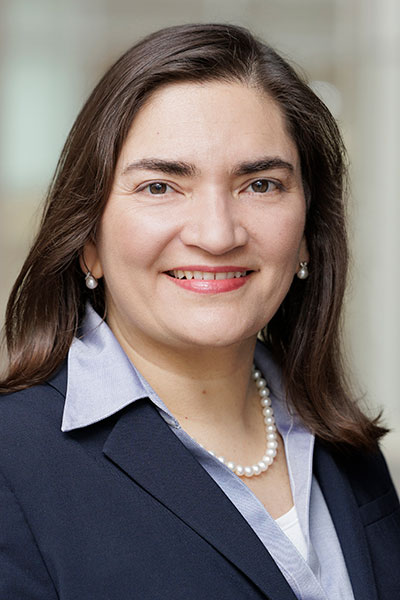The advent of CAR T-cell therapies expanded the ASTCT from a community largely focused on hematopoietic and stem cell transplantation to include engineered T-cell therapy in hematologic cancers. Encouraging clinical trial results with CAR T-cell therapies in a variety of solid tumors promise another dramatic expansion of focus.

“These are very different sorts of cell products and diseases and populations that haven’t traditionally been part of hematologic malignancies or transplantation in the past,” said Marcela Maus, MD, PhD, the Paula J. O’Keeffe endowed chair and director of the Cellular Immunotherapy Program at Massachusetts General Hospital Cancer Center, and professor of hematology and oncology at Harvard Medical School. “The ASTCT professional community is going to be very involved in their development and clinical translation.”
Maus will chair the final scientific session at the 2025 Tandem Meetings, Closing Remarks & Plenary: Solid Tumor CAR T, at 4:10 p.m. on Feb. 15 in Ballroom B. Attendees can expect updates on some of the latest new cell therapies in solid tumors.
Saul Priceman, PhD, associate professor of medicine and founding director of the KSOM/Norris Center for Cancer Cellular Immunotherapy Research at the Keck School of Medicine at the University of Southern California, will begin with a look at novel approaches to advancing cellular immunotherapy in prostate and other solid cancers.
Priceman is developing new approaches to exploit and manipulate the tumor microenvironment (TME) to generate cell products with multiple mechanisms of action. Some of these novel cell products may secrete cytokines that can alter the TME. The goal is to evoke multifactorial effects to target solid tumors across multiple pathways.
T-cell exhaustion and lack of persistence are familiar problems for cellular therapies. Julia Carnevale, MD, assistant professor of medicine at the University of California, San Francisco, is using functional genomics to better understand the mechanisms of T-cell exhaustion in the TME.
Her latest work focuses on large-scale genomic CRISPR screens in various models to better understand and direct molecular drivers of T-cell exhaustion and resistance to exhaustion in the TME. Her work could lead to novel cell products that use CRISPR knockouts and CRISPR editing to improve anti-tumor activity.
Maus is focusing on multi-function T cells that target antigen heterogeneity in brain and other solid tumors, as well as hematologic tumors. She is also exploring approaches to preclinical testing that could inform the next generation of CAR-T products to go into clinical trials.
“This closing plenary is going to be an exciting glimpse into the future of cellular activity and therapeutics,” Maus said. “We, the ASTCT community of clinicians, nurse practitioners, nurses, pharmacists, patient advocates, and beyond, have to look at how our partnership will be most helpful to patients in the future and how to prepare for these more scientifically complex products. We are united in making a better patient experience and curing disease by leveraging cells as therapeutics.”
This and other sessions at the 2025 Tandem Meetings | Transplantation & Cellular Therapy Meetings of ASTCT® and CIBMTR® will be available for on-demand viewing for registered attendees following the live presentation.
VIEW TANDEM MEETINGS SESSION RECORDINGS ON DEMAND
Many sessions at the 2025 Tandem Meetings | Transplantation & Cellular Therapy Meetings of ASTCT® and CIBMTR® are available for on-demand viewing for registered participants, both in-person attendees and digital access attendees, following the live presentation. Log into the online program to begin watching.

